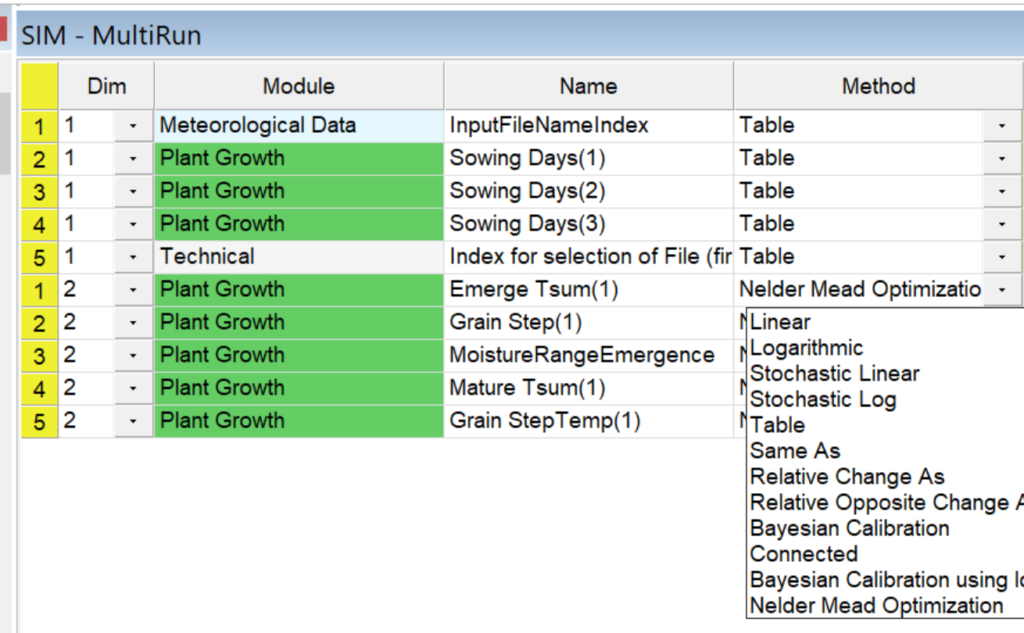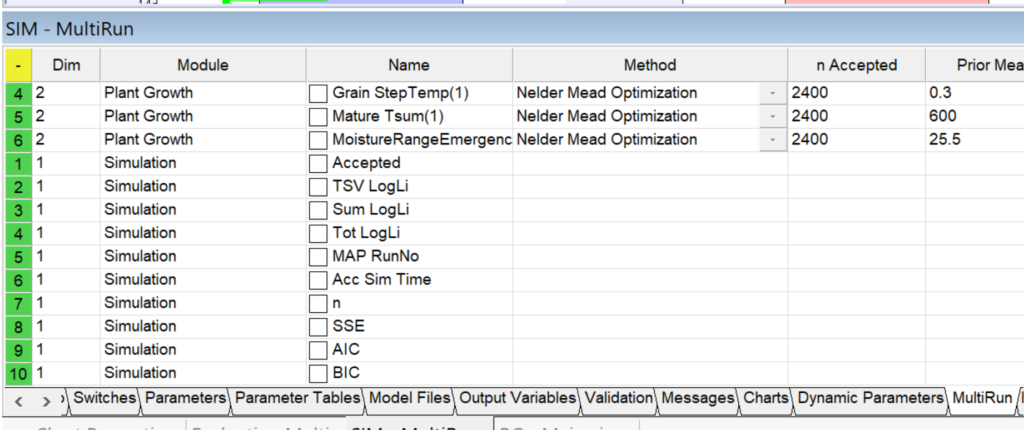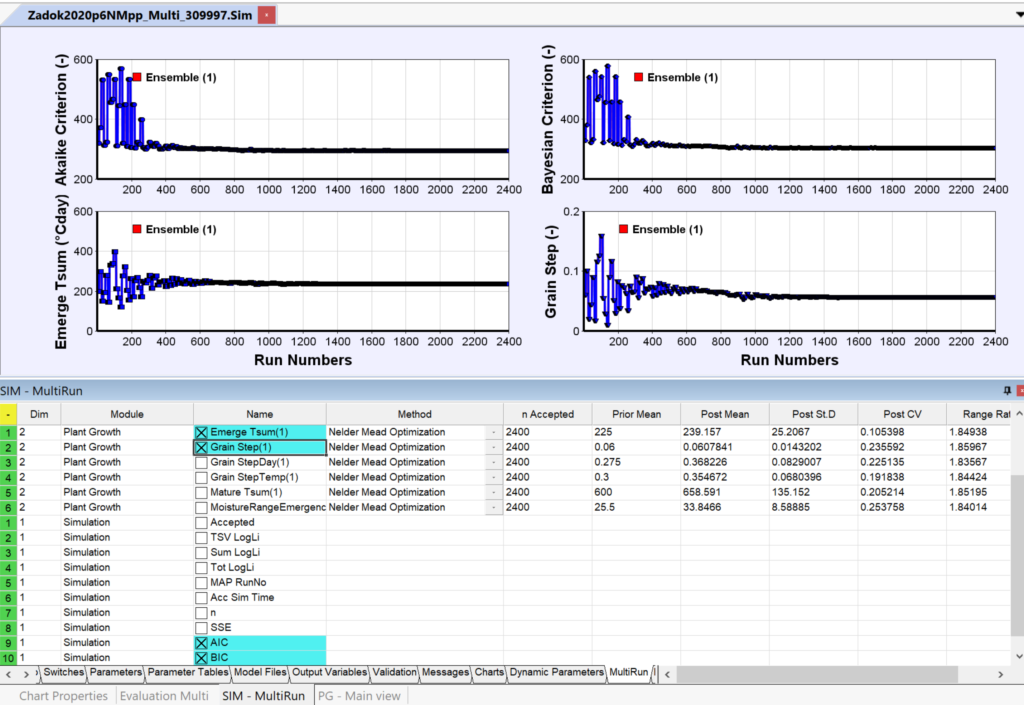New Version 6.1.3 – New Calibration Method
The new version includes a new option for calibration, based on the traditional Nelder Mead optimisation method. This method is mainly used to obtain the best parameter values based on an objective function. This method is based on another philosophy compared to the conventional Monte Carlo Method (GLUE) or the Bayesian Calibration. Instead of searching for a range of acceptable candidates the Nelder Mead approach will try to find the best possible candidates.
The selection of Nelder Mead is part of the MultiRun methods and can be find on the MultiRun options and used for any of the included parameters.

The new method is using similar like the Bayesian Method a range and a start value for each of the parameters. Note that the Range is not strictly inside this range but those values are used to start the search for the best parameter candidates. The objective function can be selected by using the sum of square error or optionally an information criteria index that is also accounting for the number of data points and the number of parameters.
The Index have been suggested within a calibration project currently ongoin within the AgMip organisation to improve the use of agricultural crop models.

Note that the objective function is making a summation of all validation variables and this summation is now added as an output together with the calibrated parameters. See below:

